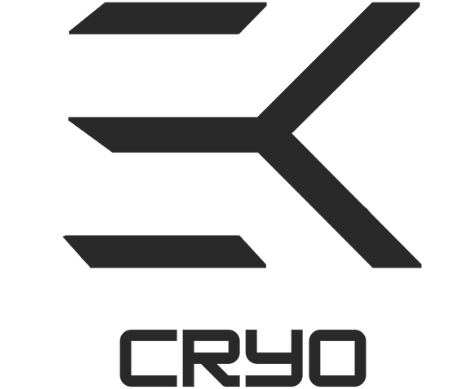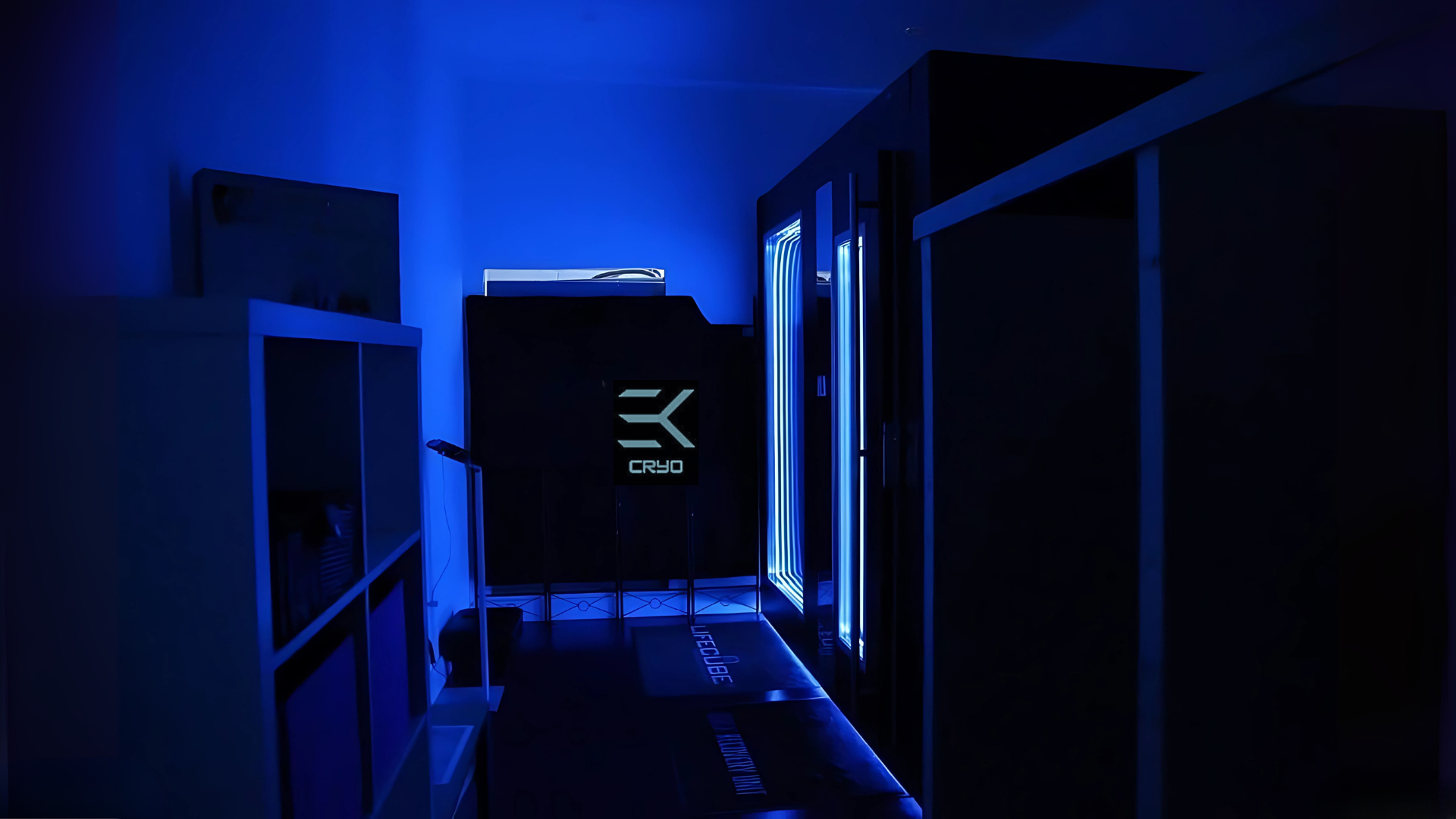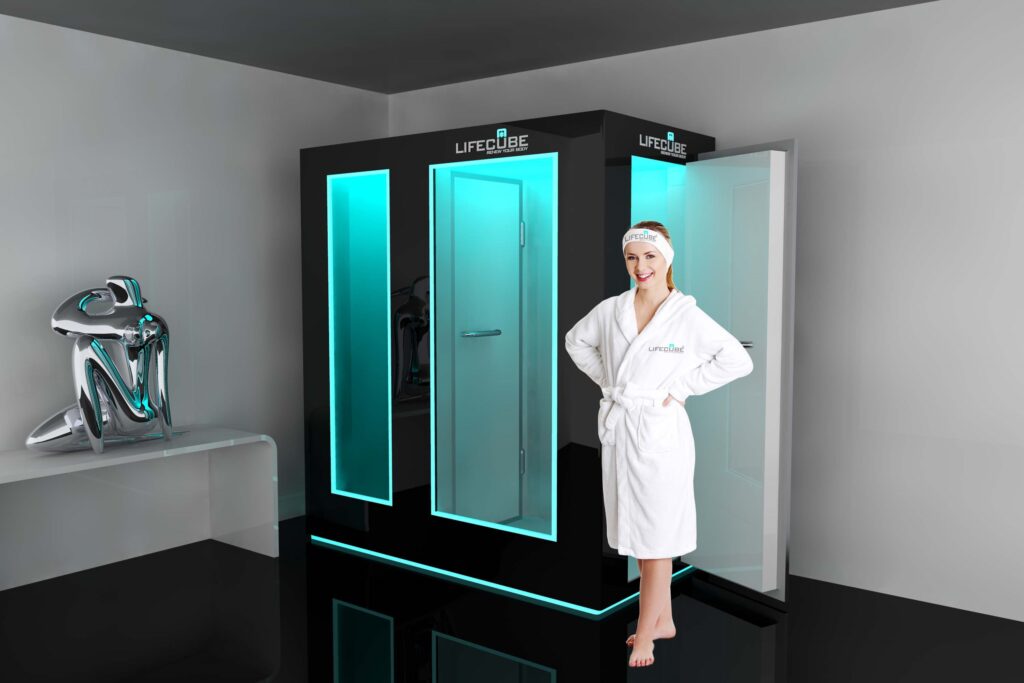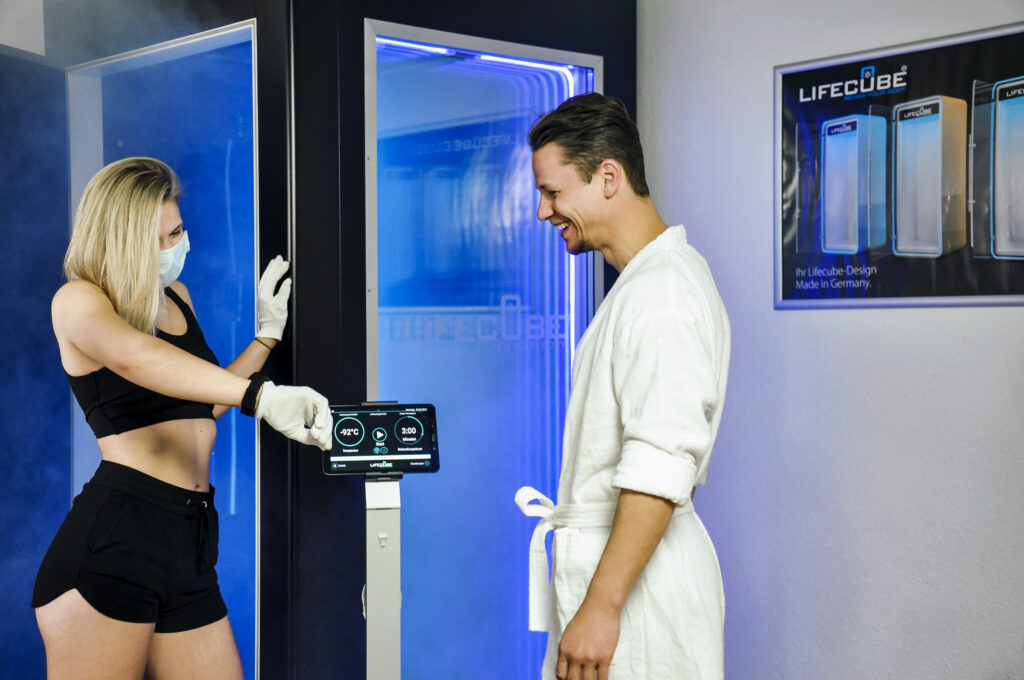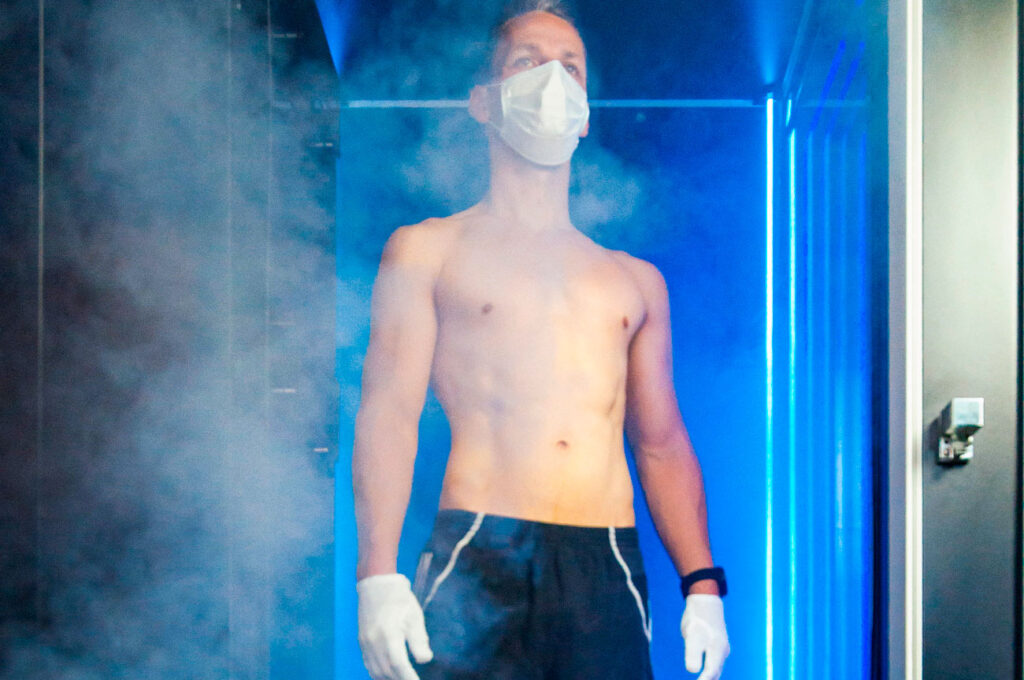But does cryotherapy actually help your skin? And if so, how? In this guide, we’ll explore why more people – especially those trying cryotherapy in London – are raving about the incredible skin benefits of cold therapy and why you might want to give it a try. Ready to discover how to truly glow in the cold? Let’s dive in.
What Is Cryotherapy Treatment?
In simple terms, cryotherapy involves exposing your body (or targeted areas) to extremely cold temperatures for a short period of time – usually two to four minutes. Whole-body cryotherapy uses a chamber filled with cooled air or nitrogen vapour, while facial cryotherapy (sometimes called a “cryofacial”) uses a stream of cold air directed onto the skin.
The idea is that these intense temperatures shock the body in a controlled way, triggering a range of natural responses that boost circulation, reduce inflammation and stimulate collagen production – all of which are essential for vibrant, youthful-looking skin.
Cryotherapy isn’t just for skincare, though. Many athletes use it to speed up recovery and reduce soreness, while others swear by its mental health benefits. But here, we’re focusing on its beauty perks and why it’s helping so many people achieve that elusive Glow in the Cold.
The Science Behind Cryotherapy and Your Skin
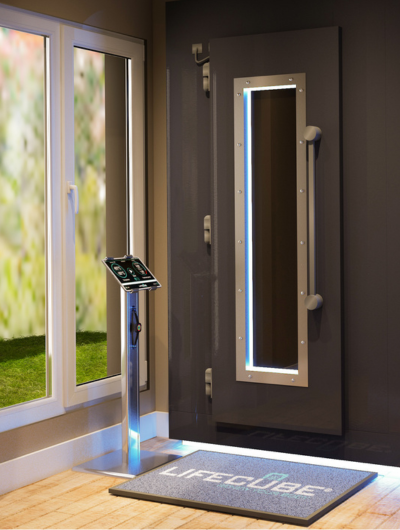
So, how does stepping into a chamber colder than the South Pole help your complexion? The answer lies in your body’s reaction to the cold. When exposed to extreme low temperatures, your blood vessels constrict (a process called vasoconstriction). Once you step out of the chamber, they rapidly dilate again (vasodilation), which floods your skin with nutrient-rich, oxygenated blood.
This increased circulation brings a host of benefits for your skin:
- Boosted collagen production – Collagen is the protein responsible for keeping your skin firm and plump, but our bodies produce less of it as we age. Cryotherapy encourages collagen synthesis, helping to smooth fine lines and improve elasticity.
- Reduced inflammation – If you struggle with puffiness, redness or skin conditions like eczema and acne, cryotherapy’s anti-inflammatory effects can help calm and soothe the skin.
- Enhanced detoxification – Improved blood flow also helps flush out toxins, which can leave your skin looking clearer and healthier.
- Tighter pores – Cold temperatures naturally tighten pores, giving your skin a more refined texture.
Put simply, cryotherapy stimulates your body to repair and rejuvenate itself. That’s why so many people leave their sessions feeling revitalised and looking brighter – it’s the very definition of a Glow in the Cold.

Cryotherapy for Different Skin Types
One of the best things about cryotherapy is that it can benefit a variety of skin types and concerns. Here’s how:
- Dry or dull skin – By boosting blood flow and collagen production, cryotherapy can bring life back to lacklustre skin, improving hydration and texture.
- Acne-prone skin – Its anti-inflammatory and antibacterial effects can help calm breakouts and reduce the risk of further irritation.
- Sensitive skin – Because it reduces redness and swelling, many people with conditions like rosacea find cryotherapy soothing.
- Ageing skin – If fine lines and sagging are your main concerns, collagen stimulation makes cryotherapy a brilliant option for firmer, plumper skin.
It’s important to note that while cryotherapy is generally safe, it’s always best to consult a qualified practitioner, especially if you have underlying medical conditions or severe skin issues.
Whole-Body Cryotherapy vs Cryofacials: Which Is Better for Skin?

When it comes to achieving that Glow in the Cold, you might be wondering whether you need to go for a full-body experience or stick to a facial treatment. Both options have their benefits:
- Whole-body cryotherapy exposes your entire body to extreme cold, improving circulation everywhere – including your face. Many people love the full-body benefits, such as reduced muscle soreness and improved energy levels, alongside the glowing skin effects.
- Cryofacials target your face specifically, using a handheld device to blow freezing air onto the skin. These treatments can be tailored to your needs, often combined with serums or masks to enhance results.
If you’re looking for a total wellness boost and you’re comfortable with the idea of standing in a chilly chamber for a few minutes, whole-body cryotherapy is worth trying. But if your main goal is to improve your complexion, a cryofacial can deliver more targeted results.

What to Expect During Your First Cryotherapy Session
If the thought of stepping into a chamber set at -80°C to -110°C feels intimidating, you’re not alone! But the experience is much less scary than it sounds.
Here’s a quick rundown of what to expect:
- Preparation – You’ll be asked to change into minimal clothing (usually shorts and a sports bra or top) and protective gear like gloves and socks. For cryofacials, you’ll simply lie back as your therapist works their magic.
- The treatment – You’ll enter the cryotherapy chamber for two to four minutes, or have cold air applied to your face for around 10 minutes during a facial. The temperature is intense but bearable – and surprisingly invigorating!
- Aftercare – Once you’re out, your blood vessels dilate, flooding your skin with fresh blood and nutrients. Many people notice an instant glow, reduced puffiness and tighter-looking skin.
Sessions are quick, non-invasive and usually require no downtime, making it easy to fit into your schedule – even on a lunch break. Many clinics now offer flexible cryotherapy packages in London, making it more convenient and affordable to enjoy regular treatments and keep your glow going strong.
How Often Should You Have Cryotherapy for Skin Benefits?

If you’re serious about achieving a lasting Glow in the Cold, consistency is key. While you’ll likely notice some immediate results after a single session, the most dramatic improvements tend to come after a series of treatments.
Many practitioners recommend starting with two to three sessions per week for the first month, then reducing to once a week or fortnight for maintenance. Cryofacials may require slightly fewer sessions as they’re more targeted.
Your exact schedule will depend on your skin goals and how your body responds, so it’s best to work with your therapist to create a plan.

Cryotherapy vs Other Popular Skin Treatments
If you’re already familiar with treatments like chemical peels, microdermabrasion or microneedling, you might be wondering how cryotherapy compares. While each treatment has its own unique benefits, here’s why cold therapy stands out:
- It’s non-invasive – No needles, no harsh chemicals, no downtime.
- It’s quick – Sessions take just a few minutes, so you can easily fit them around a busy schedule.
- It has full-body benefits – Whole-body cryotherapy doesn’t just target your skin; it also supports muscle recovery, mood and energy.
That said, cryotherapy can complement other treatments beautifully. Many clinics offer packages that combine cryofacials with facials, masks or LED light therapy to maximise your glow.
Are There Any Risks or Side Effects?
Cryotherapy is generally considered safe when performed by a qualified professional, but it’s not suitable for everyone. People with severe cardiovascular issues, nerve damage, pregnants, Raynaud’s disease or certain skin conditions should avoid it.
Possible side effects include temporary redness, tingling or numbness in treated areas. These effects usually resolve quickly, but it’s important to speak to your therapist if you have any concerns.
As with any skincare treatment, always do your research and choose a reputable clinic that follows proper safety protocols.
Real-Life Results: What People Are Saying

Many people who try cryotherapy are amazed at how quickly their skin improves. Here are some of the most common benefits they report:
- Brighter, more even skin tone – Thanks to improved blood flow and detoxification.
- Reduced puffiness – Particularly around the eyes.
- Firmer, plumper skin – From boosted collagen production.
- Calmer complexion – Fewer flare-ups for those with acne or rosacea.
It’s no wonder social media is flooded with glowing selfies from people emerging from cryotherapy chambers! That post-session radiance is the epitome of Glow in the Cold.

Why Cryotherapy Is More Than Just a Beauty Treatment
While we’ve focused on skincare, it’s worth noting that cryotherapy’s benefits go far beyond your complexion. Many users report:
- Faster muscle recovery after workouts.
- Reduced joint pain and inflammation, making it helpful for people with arthritis.
- Boosted energy levels and mood, thanks to endorphin release.
When your body feels good from the inside out, it naturally reflects in your skin. So, even if your main goal is to enhance your glow, you’ll likely notice wider wellness benefits along the way.
Is Cryotherapy Right for You?
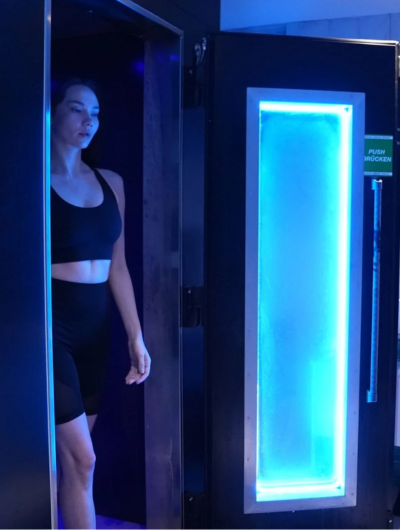
If you’re searching for a treatment that’s quick, non-invasive and effective for improving your skin, cryotherapy could be a game-changer. It’s ideal for anyone wanting to:
- Brighten dull or tired-looking skin.
- Smooth fine lines and improve firmness.
- Calm redness, puffiness or acne.
- Achieve that enviable Glow in the Cold with minimal effort.
However, it’s not suitable for everyone. Always check with your GP or a qualified practitioner before trying cryotherapy, particularly if you have existing medical conditions.

One Last Thing: Glow in the Cold
Glowing skin is often associated with warmth, sunshine and holidays, but cryotherapy proves that the opposite can be true. By harnessing the power of extreme cold, you can improve circulation, boost collagen and give your complexion the ultimate wake-up call.
Whether you opt for whole-body cryotherapy, a targeted cryofacial or simple at-home cold therapy techniques, there are plenty of ways to embrace the chill. If you’re ready to experience the revitalising effects of cold therapy, it might just be time to step into the chamber and discover your very own Glow in the Cold.
FAQ
How does cryotherapy help my skin glow?
Cryotherapy boosts circulation and collagen production by exposing your skin to extreme cold. This increases oxygen and nutrients in your skin cells, helping you achieve a natural glow in the cold.
Is cryotherapy safe for all skin types?
Cryotherapy is generally safe for most skin types, including sensitive and acne-prone skin. However, if you have severe skin conditions or circulatory issues, consult a qualified professional first.
How many cryotherapy sessions do I need for visible results?
Many people notice a brighter complexion after one session, but for a long-lasting glow in the cold, 2–3 sessions per week for a month is often recommended, followed by maintenance treatments.
What’s the difference between a cryofacial and whole-body cryotherapy?
Cryofacials focus solely on your face, using cold air to tighten pores and boost collagen. Whole-body cryotherapy treats the entire body, improving circulation and providing full-body benefits, including healthier-looking skin.
Can I get similar results at home without a cryotherapy chamber?
At-home methods like ice rolling, cold water splashes and chilled masks can refresh your skin, but professional cryotherapy delivers deeper, longer-lasting results and a more noticeable glow in the cold.
